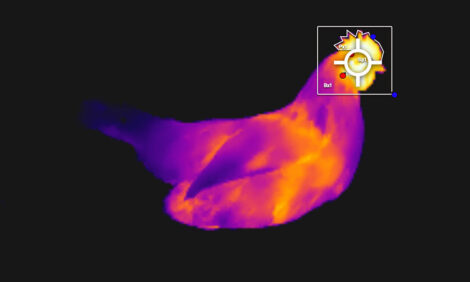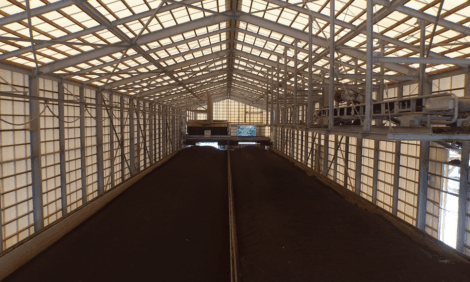



Romania Poultry and Products Annual Overview - September 2005
By the USDA, Foreign Agricultural Service - This article provides the poultry industry data from the USDA FAS Poultry and Products Annual 2005 report for Romania. A link to the full report is also provided. The full report includes all the tabular data which we have ommited from this article.Report Highlights:
The Romanian poultry industry has been steadily expanding for the past five years, but it is still foreseen to radically change after the country joins the EU. While egg production has to drastically shrink, broiler production is expected to increase threefold, in parallel with an accelerating market concentration. Demand for poultry and products is maintaining its upward trend, despite the recent steady appreciation of domestic prices. U.S. remains the top supplier of relatively low-priced products (frozen leg quarters), with more than 50 percent of country’s total broiler imports in 2004 and a similar trend into 2005.
Production
Abundant domestic grain feed and protein crops, which cheapened feed significantly, gave
the Romanian poultry industry in 2004 and 2005 a new boost, with remarkable productivity
gains in industrial operations. Poultry inventories were up 4 percent, reaching 79.3 million at
the end of 2004, although industrial flocks were totaling just 17.4 million (see table 1), with
the balance held in small households, which typically grow layers for self-consumption.
Broiler meat production in industrial operations expanded by 11 percent, reaching 205,000
MT carcass weight at the end of the year, while an ascending evolution was characteristic to
the first semester of 2005, with about 1 million heads more than one year earlier and
significant increases in productivity.
Economic indicators reveal a sustainable recovery of the sector for the past 5 years: high
productivity, improved feed conversion ratio, depressed mortality are comparable to the most
competitive poultry producing countries. Weight gains per day in the first half of 2005
averaged 50.5 grams/day, varying, depending on farm performances, between 40-62
grams/day. By comparison, during the same period of 2004, the average weight gains stood
at 47 grams/day. In terms of input use efficiency, feed conversion ratios decreased from 1.90
kg feed/kg meat in January – June 2004 to 1.85 kg feed/kg meat in 2005. Overall, Romania
ranks the eighth in terms of broiler production performance worldwide.
Similar optimistic perspectives are foreseen for sector’s evolution in the second semester of
2005, although we expect that the reduction in the breeding stock for both broiler production
and layers will limit this expansion. Despite the domestic support programs put in place by
the Ministry of Agriculture and the continuous productivity improvements, we currently peg
domestic broiler production annual growth estimate at about 8 percent.
Romania’s poultry industry performance indicators are comparable to the ones in the EU
member states, an indication that the sector may rapidly adapt itself to the conditions of the
enlarged common market. Again, as mentioned in RO4015, this scenario refers only to
production obtained in large and small commercial operations, though individual households
count roughly for one third of poultry meat domestic consump tion. The key to
competitiveness is the normally low cost of local corn. Romania typically produces 8-10
million MT of this crop and has the potential to double it with improved agronomic
techniques. Good conditions also exist for soybean cultivation under irrigation and, in fact, in
2004/05 and 2005/06, years with significant rainfalls, Romania has been self sufficient in
crop protein.
Concentration is significant in the poultry industry: the seven largest operations accounted in
mid-2005 for roughly 50 percent of country’s commercial production, but small players,
producing 1,500-2,000 MT/year, remain numerous. The large farms are fully integrated from
reproduction, to slaughter and processing, and, occasionally, they even have they own
distribution network. Smaller producers are not integrated and deliver their production to
local slaughterhouses.
The poultry industry in Romania is foreseen to radically change after the country joins the
EU. While egg production has to drastically shrink, broiler production is expected to increase
three-fold, in parallel with an accelerating market concentration. Analysts show that the
number of such broiler industrial operations after 2007 will be just 20 – 30, with an annual
production between 25-40 thousand MT.
The number of poultry meat plants will likely halve in the medium run.
FDI level in the industry is one of the highest in agriculture, with investors from Middle East
and EU, who generally acquired formerly state-owned farms. Since labor costs in the industry
are much lower than in EU, investments in new technologies have been made for raising
quality of products that target export markets.
Consumption
Although imports continued in 2005 to hold about 37 percent of the broiler meat
consumption, local producers feel that they have won the competition for the local market.
Recent traits in the urban retail indicate a clear preference for fresh, branded, attractively
packaged products, and, in fact, many supermarkets have recently given up selling bulk
frozen chicken parts.
In 2004, roughly 320,000 MT of broiler meat were sold domestically, which translates into
about 14 KG/capita per year. To this, significant amounts (54,000 MT in 2004, according to
Ministry of Agriculture statistics) of poultry meat were consumed from self-production,
especially in rural households.
Consumers are not devoted to a single brand, but product availability (i.e., good distribution
through supermarkets and smaller groceries) plus an acceptable price/quality ratio are
factors that influence consumption of a certain brand. Generally, local market reveals a
preference for dark poultry meat (legs) versus white meat (breast), although the price
differential between the two is becoming significant (see Table 3).
Domestic consumers are shifting to higher quality products, which make producers
increasingly interested in positioning themselves on the market via product branding and
packaging. Close to 50 percent of locally produced poultry meat is sold chilled, rather than
frozen.
High value-added chicken products (ready-to-cook) are not yet in demand on the local
market.
Trade
Although since 2003 Romania has started using some market opportunities for chicken meat
in EU, country’s imports of broiler parts surged by 45 percent in 2004, nearly reaching
120,000 MT.
US supplied more than half of the total broiler meat imports in 2004, and Brazil another 26
percent. The two countries have remained the main import sources in 2005 and, given the
pace in the first semester, we anticipate that imports of chicken parts will exceed again
120,000 MT by the end of the year. Low-income population segments continue to absorb
significant amounts of such reasonably priced products. A good 90 percent of these are
frozen parts (especially chicken leg quarters), despite a quite protectionist import regime,
with MFN duties set up at 45 pecent ad valorem (see Table 2).
Between August 2004-July 2005, EU offered “zero treatment” to 3,900 MT of poultry meat
(chilled or frozen) and 1.050 MT of processed poultry meat originated from Romania. In
August 2005, an additional Protocol to the European Association Agreement was enacted,
providing new trade concessions by both sides. Although Romania started using these
concessions, there are still significant sanitary-veterinary restrictions that prevent exports to
The situation in mid-2005 is that only 6 poultry slaughterhouses and 4 processing units that
fully comply with the EU requirements and eligible to ship to Member States. Seven
slaughterhouses are being revamped to be compliant by the end of 2006, while for other two
EU granted a transition period of additional three years. After formally receiving EU
membership (currently scheduled for January 2007), products from establishments subject
to transitional arrangements will not be sold to other Member States and will be clearly
identified.
Further Information
To read the full report please click here
Source: USDA Foreign Agricultural Service - September 2005








